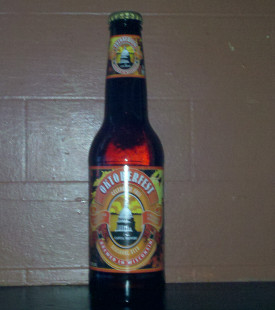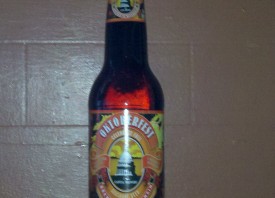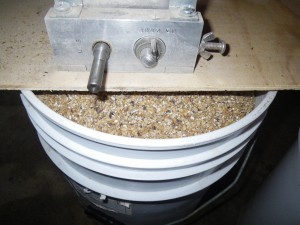 There are times when my brain builds something up so much that the actual event elicits little more than a, “Ho, hum. That is not what I expected.” Such an event happened last night during the Style of the Month portion of the Menomonie Homebrewers meeting.
There are times when my brain builds something up so much that the actual event elicits little more than a, “Ho, hum. That is not what I expected.” Such an event happened last night during the Style of the Month portion of the Menomonie Homebrewers meeting.
Oktoberfest is one of my favorite beer styles, partly because every example I have tried has been enjoyable. A great malty flavor backed up with a firm bitterness and a dry finish leaving you wanting more. Oktoberfest was the first beer I liked.
Since our club is located in Wisconsin, we try to find a Wisconsin-based brewery when we purchase the style of the month for our meetings. I’d heard good things about Capital Brewery out of Madison, WI. I figured their Oktoberfest would live up to their reputation.
Don’t get me wrong, the beer was good, it just wasn’t what I expect from Oktoberfest. The only thing close to what I expected was the color. The color was a little lighter than most Oktoberfests I’ve had, leaning toward orange rather than the “fiery amber” touted in Capital’s marketing speak.
The aroma was filled with honey-like sweetness and hints of fresh-brewed iced tea. There were fruity esters and no hop aroma. The lack of hop aroma is appropriate for the style, the fruity esters . . . not so much.
The flavor was sweet up front, with a strong crystal sweetness backed up with a really firm, cloying sweetness that didn’t seem to end until I took a drink of something else. The expected dry finish never materialized.
I don’t know if Capital ferments this beer with an ale yeast rather than a lager yeast, which is possible if you control the fermentation or if they actually used a lager yeast but the temp got away from them.
The best description I heard of the beer that night was, “It tastes like a British bitter, but without the hops.”
As a first exposure to Capital’s Oktoberfest, I was disappointed and I cannot recommend this beer as an Oktoberfest. It’s a good beer, it just wasn’t what I want from this style.
If you’ve had this beer and it wasn’t what I described above, let me know in the comments. Did you have it from this year(2012) or a different year? If you’ve had it from multiple years, does it change every year? I’m excited to hear your thoughts!




